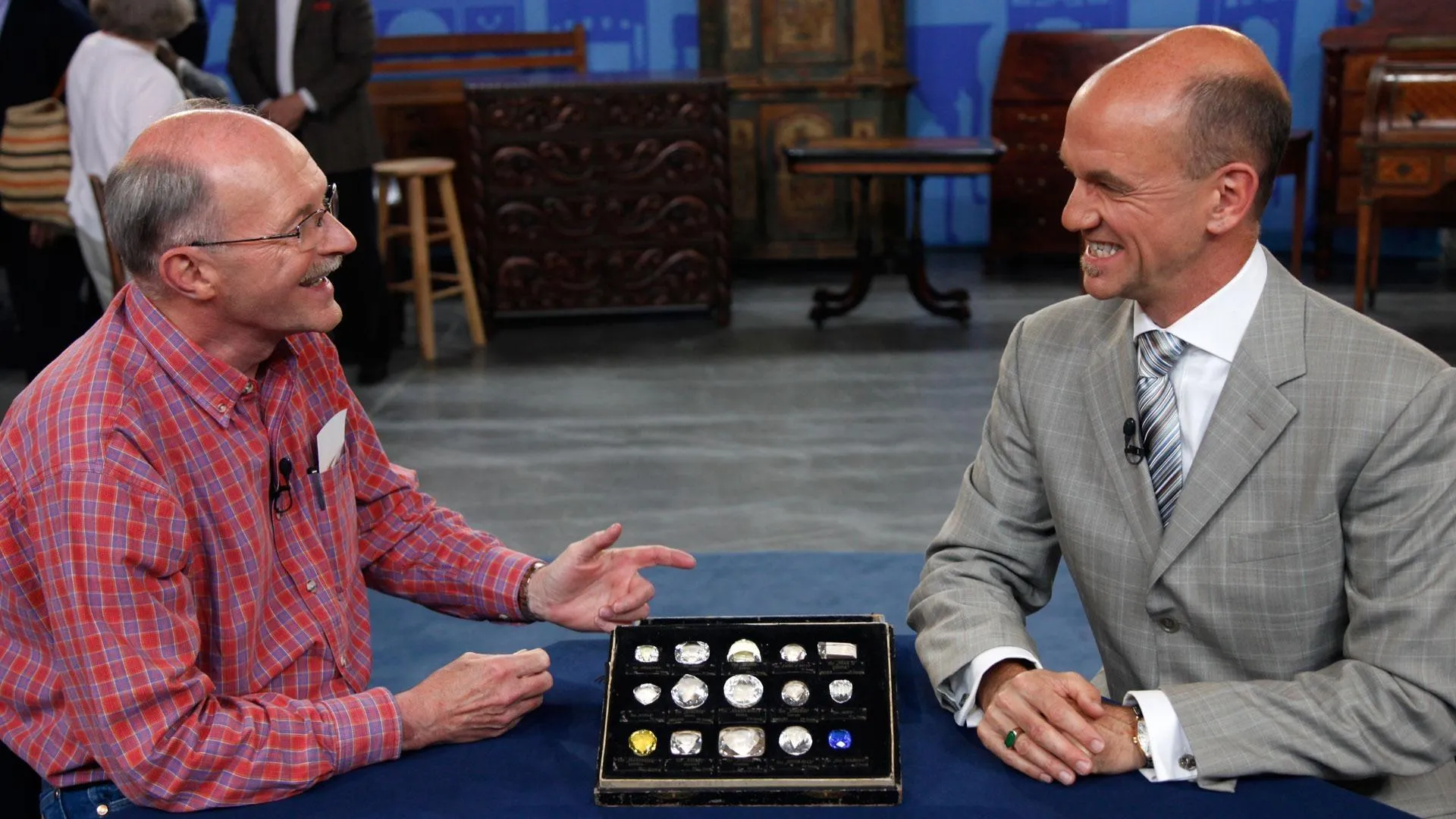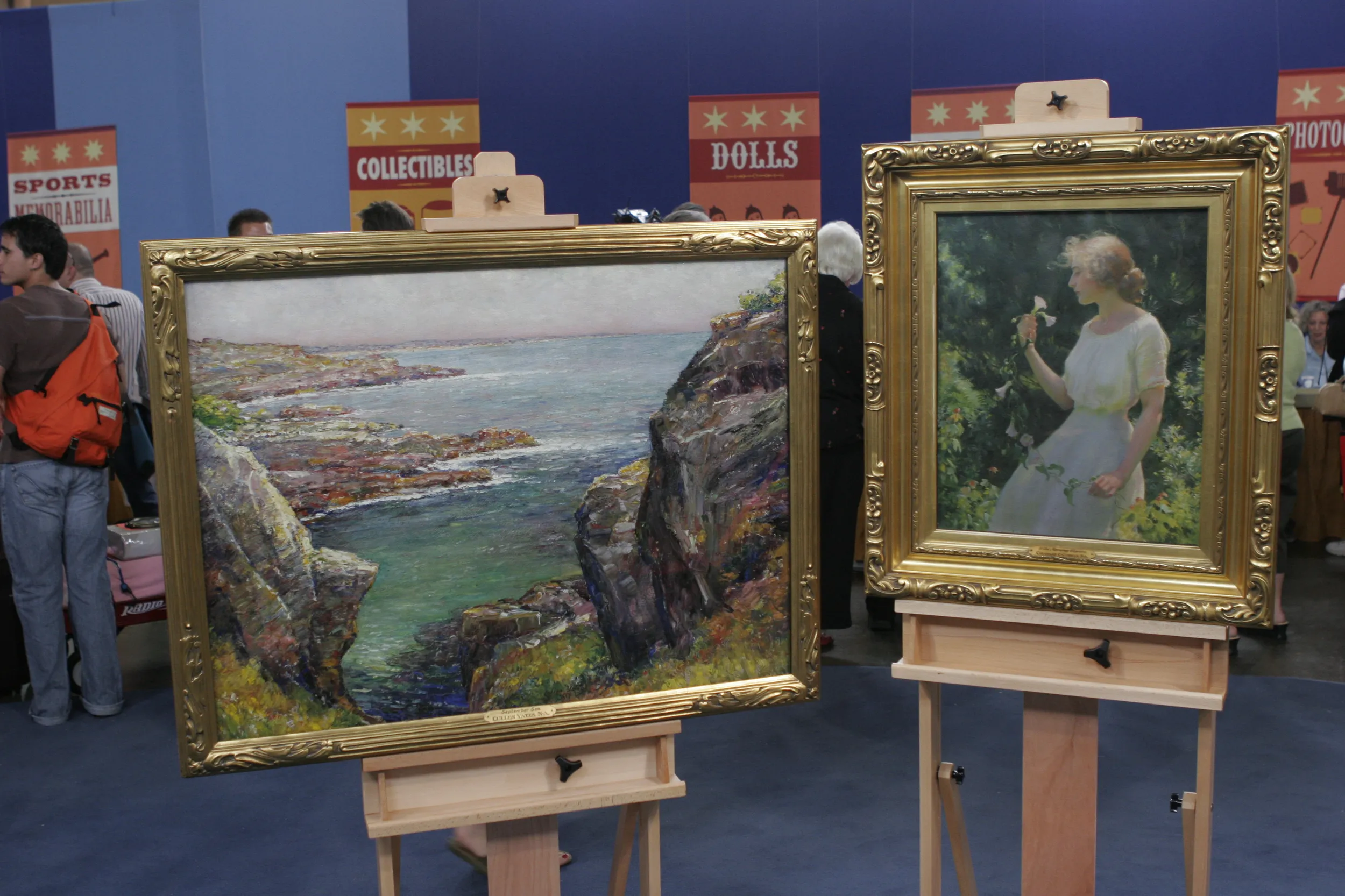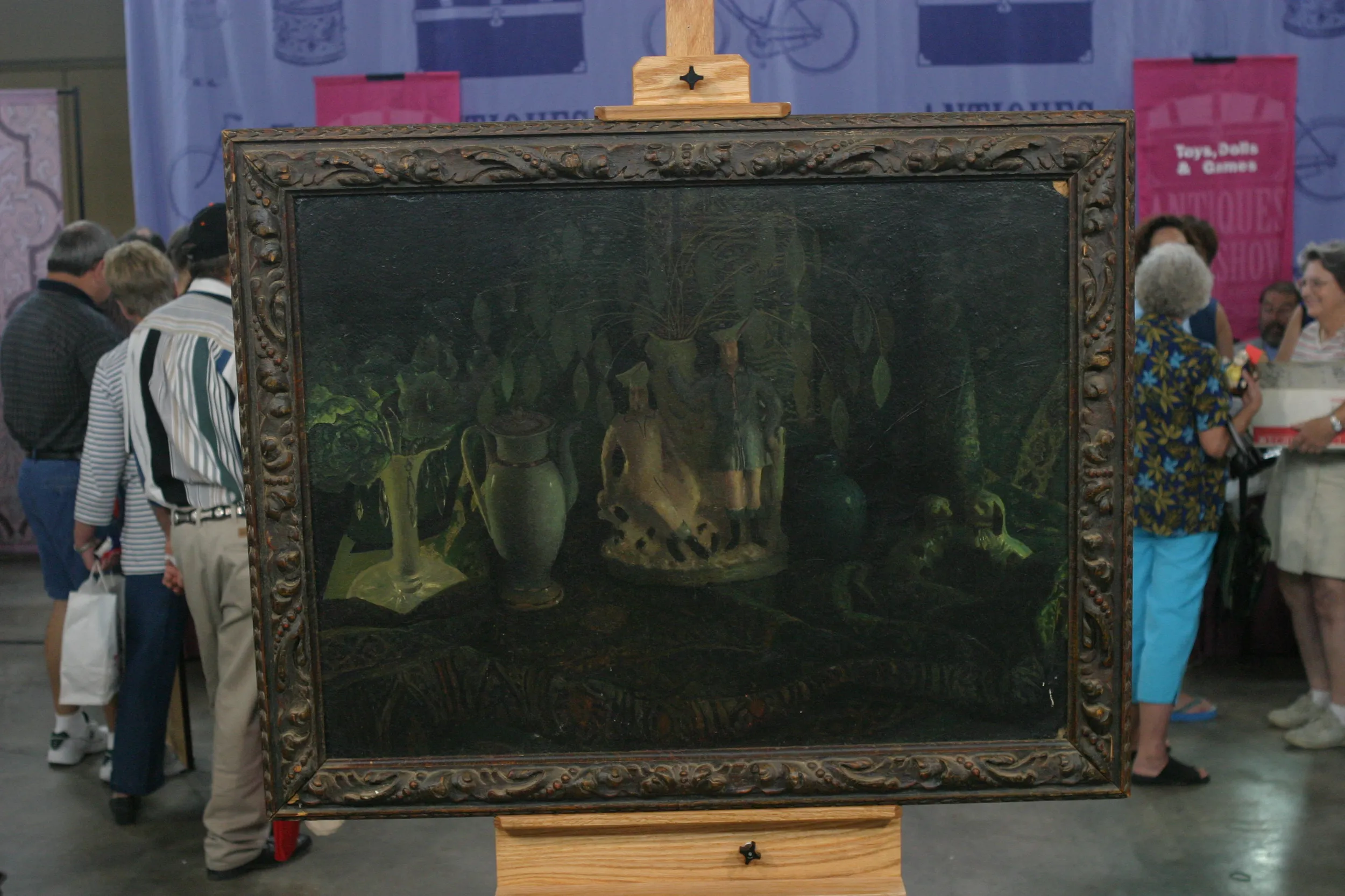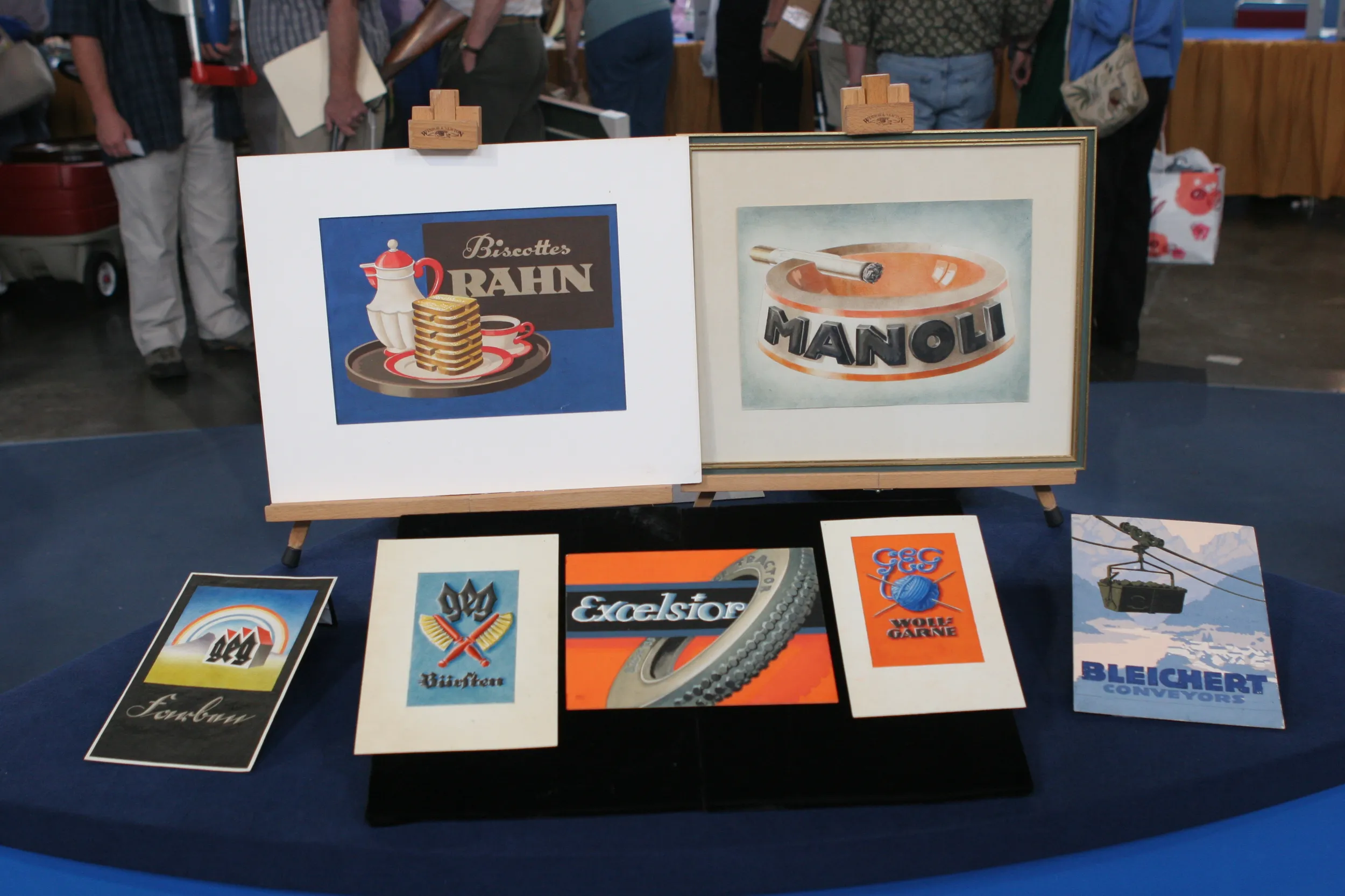GUEST: I got this about 1965 at a silent auction. And it was to raise money for a scholarship. And I saw the painting and I thought, oh, that is absolutely beautiful. I would love to have it. I didn't know what a silent auction was. Someone explained to me that I should write down a very low number that I would pay for it and others would come along and write higher amounts. So I thought, okay, I can do that. And I wrote down 75 cents. Then I hovered by the table to put down a higher number if somebody else bid on it, which, of course, I expected. And no one else bid on it. I got it for 75 cents, and I was so thrilled to just have it. Absolutely. I would have gone to $10 or $20.
APPRAISER: Do you know who the painting is by?
GUEST: It is by Selden Gile.
APPRAISER: That's right.
GUEST: And he painted in Northern California in the '30s; I believe earlier, too, maybe '20s and '30s. The lady who donated this to our little silent auction had bought a house that he lived in in Sausalito.
APPRAISER: Mm-hmm.
GUEST: And the reason she bought it was because many of his paintings were left in the house after he died.
APPRAISER: Well, that's a nice provenance to have. And this one is signed and dated down here, "S." And that's "Connor, Gile, 32." So this is 1932 it's painted. But you're quite correct. He was active in those years, in the '20s and '30s. He'd originally come from Maine, but he moved to California just after the turn of the century. And he became a major figure in Californian painting and was associated with a group, "The Group of Six." And they really were a group. They spent a lot of time together, him and his painter chums, and all the artists were influenced by the Panama Pacific Exhibition in 1915, where they would have first become aware of the modern movements, what was happening in Europe. And of course at that time, the Fauve painters were very influential, and this shows all the elements of Fauve painting-- very strong color, lots of sinuous rhythms, all that sort of thing. And he was very popular amongst his friends because he was also a bit of a chef and a great host. They used to have a place in the Oakland hills called "The Chow House." And by all accounts, he was rather disappointed in love with a young lady, and he rather gave up on the girls and hung out with his friends and they'd go hiking and sketching. They threw these great parties, and people like Jack London would come along. And I think actually it was probably the death of him ultimately. He did a little bit too much good living. But in between, he was doing these wonderful paintings. Now, so you bought it in the '60s.
GUEST: About mid '60s.
APPRAISER: And 75 cents.
GUEST: 75 cents.
APPRAISER: And what do you think it might be worth now?
GUEST: A few hundred? Maybe up to a thousand?
APPRAISER: This is a very attractive little watercolor. So would you be surprised to hear at auction, probably $5,000 to $8,000?
GUEST: Oh, my goodness.
APPRAISER: And I should put that in context. I spoke to one of my colleagues who deals with a lot of Californian paintings, and he suggested at retail, probably somewhere in the $10,000 to $15,000 range.
GUEST: Uh-huh. Okay. Well, that's a lot of money.
APPRAISER: So I hope that's good news.











